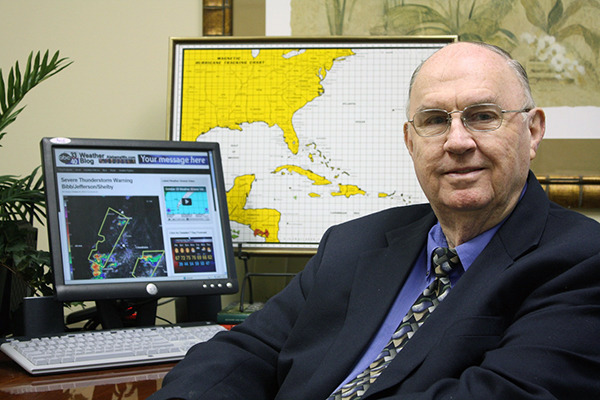Sea, Lake, & Land-Breezes: How the Temperature Difference Between Water & Land Influences Weather Along the Coastline
It’s a beautiful, hot day and you and your friends decide to head to the beach, so you pack up the car and head out. Your car is telling you that it is 85?F outside then suddenly the temperature drops to 79?F. What happened? Did your car’s thermometer break? Unlikely. More likely, you crossed what meteorologists call a sea-breeze front which leads to cooling near the coastline of the ocean or sea. Similarly, a lake-breeze front can occur near a large lake. On the left side of the photo above, the blue line with triangles represents the sea-breeze or lake-breeze front.
?
But why does this occur? Simply, it is the result of uneven heating between the land and water. Land changes temperature faster than water does. Therefore, as the sun shines and begins to heat the Earth’s surface, the land’s temperature increases faster than the water’s temperature. This leads to a temperature difference between the land and the water. The temperature difference causes the winds in the area to blow from the cold water to the warm land. The greater the difference in temperature, the faster the winds will blow. Therefore, as daytime heating increases, the temperature difference increases. This in turn leads to windspeeds increasing. As the winds increase, they begin to move the colder air that was over the water onto the shore. This causes the temperature to drop near the coast. The leading edge of the change in temperature is the sea-breeze or lake-breeze front. As the day progresses, the front moves further inland and around late afternoon is usually at its furthest point inland. Once the sun beings to set and the temperature begins to fall, the front begins to weaken and eventually disappears.
Just as the land warms faster than the water, it also cools faster. Therefore, once the sun goes down, cooler temperatures are seen over the land than over the water. This results in the opposite of a sea-breeze or lake-breeze with winds blowing from the cooler land to the warmer water. When this occurs, it is referred to as a land-breeze. The land-breeze front is located where the temperature change is located. This can be seen on the right side of the above image. However, the temperature difference at night is often weaker than it is during the day. Therefore, the winds and front are also weaker.
Along the fronts, clouds and thunderstorms can develop. However, thunderstorms are more likely to develop along a sea-breeze or lake-breeze front than they are along a land-breeze front. Due to a sea-breeze or lake-breeze front, the shore is usually cloudy despite the rest of the area being sunny. Another interesting meteorological phenomenon that can occur is when there are multiple sea-breeze or land-breeze fronts. Sometimes, as the individual fronts move inland, they collide with one another. As a result, strong thunderstorms and rain showers seemingly appear out of nowhere. Such a situation often occurs over the Florida peninsula. Sea-breeze fronts develop on both the east and west coast of the state and move inland. They then collide with each other over the middle of the state, resulting in afternoon thunderstorms. This is why it often storms in the middle of the afternoon when you are visiting the amusement parks in Orlando.
For more information on Sea- and Lake-breezes refer to:
Ahrens, D. C., 2013: Meteorology Today An Introduction to Weather, Climate, and the Environment. 10th ed. Brooks/Cole, Cengage Learning, 241-243.
?
UCAR Comet Module: Thermally-forced Circulation I: Sea Breezes.
http://meted.ucar.edu/mesoprim/seabreez/print.htm
North Carolina Climate Center climate.ncsu.edu/edu/Breezes
??
To learn more about other important education stories in atmospheric and oceanic science, be sure to click here!
© 2018 Meteorologist Sarah Trojniak
AlabamaWX is pleased to partner with the Global Weather and Climate Center team for outstanding posts about our atmosphere. Visit them at https://www.globalweatherclimatecenter.com for more great information!
Category: Partner News Stories

















